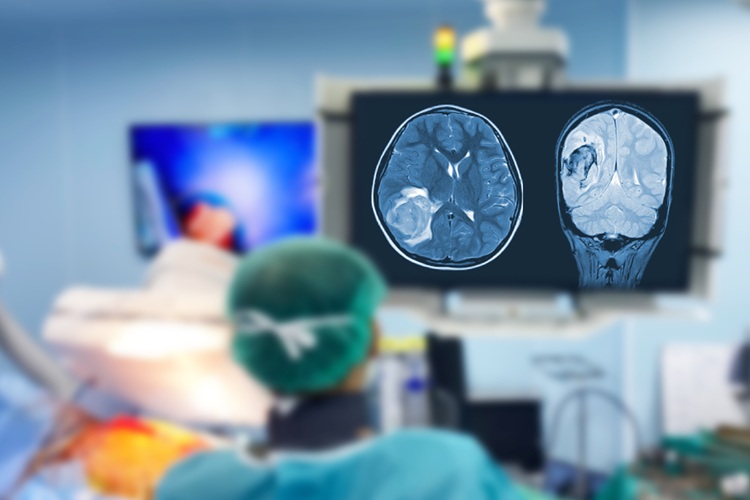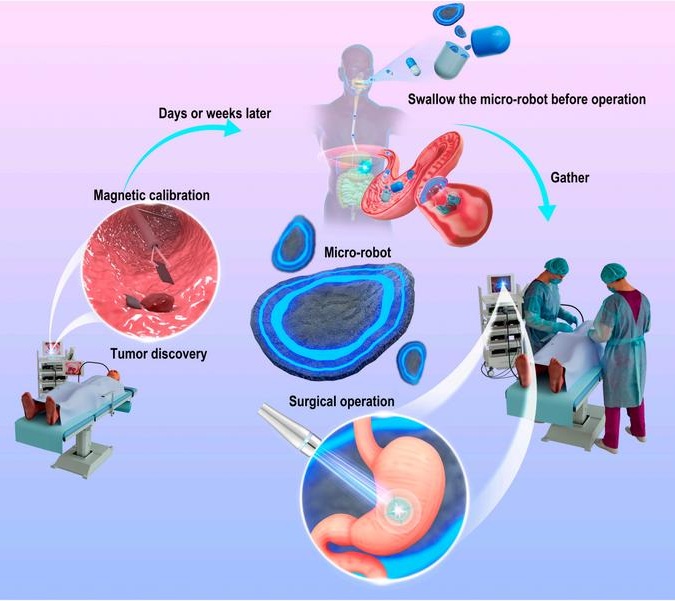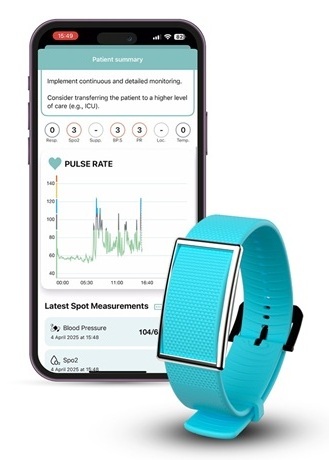Home Renal Dialysis Machine Offers Patients More Freedom
|
By HospiMedica International staff writers Posted on 18 May 2009 |
A new home dialysis machine helps patients with kidney failure and end stage renal disease (ESRD) self-administer peritoneal dialysis at home while they sleep.
The Liberty Cycler is intended for use in automated peritoneal dialysis (APD) therapy, regulating the exchange of used and fresh dialysis fluid while the patient sleeps; but unlike hemodialysis, the Liberty does not require needles. The Liberty Cycler fills and empties the abdomen with dialysate three to five times at night during sleep; in the morning, dialysate flows into the abdomen, and the catheter is detached from the system. The dialysate is carried in the peritoneal cavity during the day. During that time, normal daily activities can be maintained. At night, the catheter is reattached to the cycler before sleep, to perform APD one again.
The Liberty Cycler features a large color touch screen that gives easy to follow directions accompanied by pictures, an easy-to-load APD treatment cassette, and special connectors that are automatically inserted into the catheter lumen, making it easy to perform dialysate exchanges. The Liberty Cycler has a small footprint, small enough to fit on a nightstand, and requires no special plumbing or electrical hook-ups. The Liberty Cycler is available only through the dialysis facilities of the developer Fresenius Medical Care (Bad Homburg, Germany).
"Fresenius Medical Care recognizes that many dialysis patients have active lifestyles, and want more choices for treatment,” said Michael Lazarus, M.D., chief medical officer and senior executive VP of Fresenius Medical Care North America. "Many patients have discovered that dialyzing while they sleep provides them with the freedom to continue to pursue their careers, care for their families, or enjoy their years of retirement.”
The fluids used in APD contain either a glucose and amino acid solution or a compound called icodextrin to remove water from the patients blood, with the glucose solution most commonly used. The glucose "strength” (1.5%, 2.5% or 4.25%) of the solution determines how much water is removed--the higher the concentration, the greater the effect. The amino acids in the solution are used to improve the patient's nutritional condition. The benefits of the icodextrin fluid, on the other hand, are that it removes more water than the glucose solution for longer exchange intervals, and that it is glucose- free, which is advantageous both for the peritoneum and the body as a whole.
Related Links:
Fresenius Medical Care
The Liberty Cycler is intended for use in automated peritoneal dialysis (APD) therapy, regulating the exchange of used and fresh dialysis fluid while the patient sleeps; but unlike hemodialysis, the Liberty does not require needles. The Liberty Cycler fills and empties the abdomen with dialysate three to five times at night during sleep; in the morning, dialysate flows into the abdomen, and the catheter is detached from the system. The dialysate is carried in the peritoneal cavity during the day. During that time, normal daily activities can be maintained. At night, the catheter is reattached to the cycler before sleep, to perform APD one again.
The Liberty Cycler features a large color touch screen that gives easy to follow directions accompanied by pictures, an easy-to-load APD treatment cassette, and special connectors that are automatically inserted into the catheter lumen, making it easy to perform dialysate exchanges. The Liberty Cycler has a small footprint, small enough to fit on a nightstand, and requires no special plumbing or electrical hook-ups. The Liberty Cycler is available only through the dialysis facilities of the developer Fresenius Medical Care (Bad Homburg, Germany).
"Fresenius Medical Care recognizes that many dialysis patients have active lifestyles, and want more choices for treatment,” said Michael Lazarus, M.D., chief medical officer and senior executive VP of Fresenius Medical Care North America. "Many patients have discovered that dialyzing while they sleep provides them with the freedom to continue to pursue their careers, care for their families, or enjoy their years of retirement.”
The fluids used in APD contain either a glucose and amino acid solution or a compound called icodextrin to remove water from the patients blood, with the glucose solution most commonly used. The glucose "strength” (1.5%, 2.5% or 4.25%) of the solution determines how much water is removed--the higher the concentration, the greater the effect. The amino acids in the solution are used to improve the patient's nutritional condition. The benefits of the icodextrin fluid, on the other hand, are that it removes more water than the glucose solution for longer exchange intervals, and that it is glucose- free, which is advantageous both for the peritoneum and the body as a whole.
Related Links:
Fresenius Medical Care
Latest Critical Care News
- Breakthrough Portable Device Detects Airborne Viruses and Bacteria in Hospitals
- Magnetic Shaftless Propeller Millirobot Shows Promise for Thrombosis Treatment and Targeted Drug Delivery
- New System Combines Biomarkers, Imaging and Modifiers for Accurate TBI Diagnosis
- Light-Activated Immunotherapy Combined with Engineered Protein Technology Targets Hard-To-Treat Cancer
- 3D-Printed, Adhesive-Free Wearable to Transform Health Monitoring
- AI-Enabled ECG Algorithm Enables Early Detection of Heart Failure
- Models Predict Severity of Pneumonia in Kids to Help Guide Treatment
- AI Tool Accurately Sorts Cancer Patients by Likely Outcomes
- Rapid Self-Healing Electronic Skin Paves Way for Smarter and Tougher Wearables
- Novel Needle-Free Reagent Injection Method to Reduce Spread of Infectious Diseases
- AI Model Boosts Early Delirium Detection for Improving Health Outcomes of Hospitalized Patients
- New Ultrasound-Guided 3D Printing Technique to Help Fabricate Medical Implants
- Specialized Face Mask with Gas Sensor Detects Chronic Kidney Disease
- Implantable Device Continuously Monitors Brain Activity in Epileptic Patients
- Mechanosensing-Based Approach Offers Promising Strategy to Treat Cardiovascular Fibrosis
- AI Interpretability Tool for Photographed ECG Images Offers Pixel-Level Precision
Channels
Surgical Techniques
view channel
Innovation in Thermographic Neurosurgical Imaging Supports Informed Decision-Making
In high-stakes neurosurgery, gaining real-time insights into cerebral blood flow is vital yet challenging. Conventional indocyanine green (ICG) fluorescence imaging relies on contrast agents and offers... Read more
Fluorescent Soft Robots Accurately Locate Early Gastric Cancer During Laparoscopic Surgery
Laparoscopic surgery for early gastric cancer has become increasingly popular worldwide due to its significant short-term benefits and comparable oncological outcomes to traditional open surgery.... Read morePatient Care
view channel
Portable Biosensor Platform to Reduce Hospital-Acquired Infections
Approximately 4 million patients in the European Union acquire healthcare-associated infections (HAIs) or nosocomial infections each year, with around 37,000 deaths directly resulting from these infections,... Read moreFirst-Of-Its-Kind Portable Germicidal Light Technology Disinfects High-Touch Clinical Surfaces in Seconds
Reducing healthcare-acquired infections (HAIs) remains a pressing issue within global healthcare systems. In the United States alone, 1.7 million patients contract HAIs annually, leading to approximately... Read more
Surgical Capacity Optimization Solution Helps Hospitals Boost OR Utilization
An innovative solution has the capability to transform surgical capacity utilization by targeting the root cause of surgical block time inefficiencies. Fujitsu Limited’s (Tokyo, Japan) Surgical Capacity... Read more
Game-Changing Innovation in Surgical Instrument Sterilization Significantly Improves OR Throughput
A groundbreaking innovation enables hospitals to significantly improve instrument processing time and throughput in operating rooms (ORs) and sterile processing departments. Turbett Surgical, Inc.... Read moreHealth IT
view channel
Printable Molecule-Selective Nanoparticles Enable Mass Production of Wearable Biosensors
The future of medicine is likely to focus on the personalization of healthcare—understanding exactly what an individual requires and delivering the appropriate combination of nutrients, metabolites, and... Read more
Smartwatches Could Detect Congestive Heart Failure
Diagnosing congestive heart failure (CHF) typically requires expensive and time-consuming imaging techniques like echocardiography, also known as cardiac ultrasound. Previously, detecting CHF by analyzing... Read moreBusiness
view channel
Medtronic Partners with Corsano to Expand Acute Care & Monitoring Portfolio in Europe
Medtronic plc (Galway, Ireland) has entered into a new strategic partnership with Corsano Health (Den Haag, The Netherlands) for exclusive European distribution rights to a medically-certified multi-parameter... Read more

















